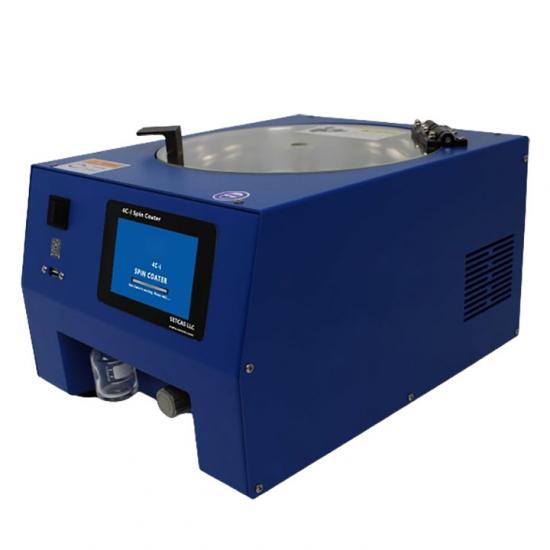Xiamen Tmax Battery Equipments Limited was set up as a manufacturer in 1995, dealing with Laboratory equipments, technology, etc. We have total manufacturing facilities of around 2, 000 square meters and more than 100 staff. Owning a group of experie-nced engineers and staffs, we can bring you not only reliable products and technology, but also excellent services and real value you will expect and enjoy.
A vacuum spin coater is a specialized piece of equipment used in the fabrication of thin films, which is particularly useful in the development of semiconductor devices, including perovskite solar cells. Unlike traditional spin coaters that operate at atmospheric pressure, a vacuum spin coater allows for the deposition process to occur under reduced pressure conditions. This feature can be advantageous for certain applications where controlling the environment during the coating process is crucial for achieving highquality films.
Key Features and Benefits
1. Vacuum Environment
The primary distinction of a vacuum spin coater is its ability to perform the spin coating process under vacuum. This can minimize the presence of air bubbles and contaminants, leading to higher quality films with fewer defects.
Reduced pressure can also help in controlling the evaporation rate of solvents used in the coating solution, allowing for better film uniformity and thickness control.
2. Uniform Film Deposition
Spin coating inherently provides a method for depositing highly uniform thin films. By performing this under vacuum, it's possible to further enhance uniformity and achieve more consistent results across large areas.
This is especially important for applications like perovskite solar cells, where film quality directly impacts device performance.
3. Control Over Process Parameters
Vacuum spin coaters typically offer precise control over parameters such as spin speed, acceleration, vacuum level, and temperature. These controls are essential for optimizing the properties of the deposited films.
Some systems may also integrate heating elements or cooling mechanisms to assist in solvent evaporation or to stabilize the substrate temperature during the coating process.
4. Material Compatibility
Suitable for a wide range of materials, including polymers, organic compounds, inorganic salts, and hybrid materials commonly used in photovoltaic devices like perovskites.
The ability to adjust the vacuum level and other process parameters makes these systems adaptable for different material types and application requirements.
Spin Coating Machine
5. Applications
Photovoltaics: Particularly valuable in the fabrication of perovskite solar cells, where the quality of the perovskite layer significantly influences cell efficiency.
Semiconductor Manufacturing: Used for depositing layers in various semiconductor devices, including LEDs, OLEDs, and transistors.
Optoelectronics: For producing thin films in devices such as photodetectors and optical sensors.
Research and Development: Ideal for laboratories exploring new materials and processes, offering flexibility and precision necessary for cuttingedge research.
6. Considerations
Cost: Vacuum spin coaters tend to be more expensive than their nonvacuum counterparts due to the added complexity of the vacuum system.
Maintenance: Requires regular maintenance to ensure the vacuum system remains functional and contaminationfree, which could involve replacing seals and cleaning components.
Safety: Handling of the system should consider safety protocols related to working under vacuum conditions and the use of potentially hazardous chemicals during the coating process.
In summary, a vacuum spin coater is an advanced tool designed to provide superior control over the thinfilm deposition process, making it an invaluable asset in the production and research of highefficiency photovoltaic devices, among other applications. Its capability to operate under vacuum enhances film quality by minimizing defects and improving uniformity, which are critical factors in achieving optimal performance in devices like perovskite solar cells.

